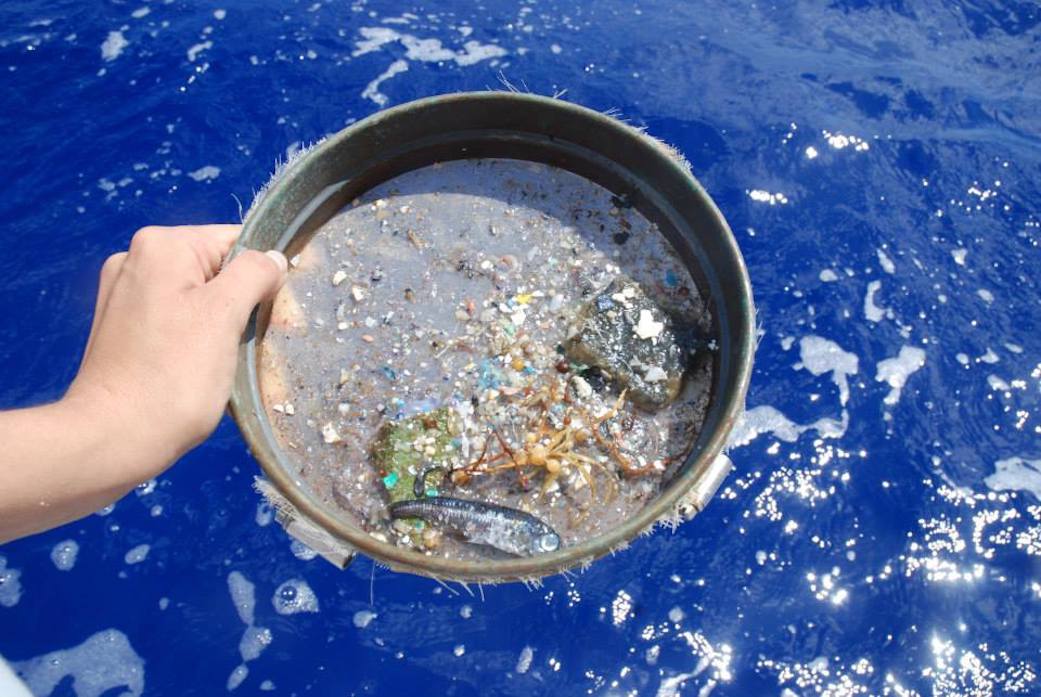Grow your knowledge about how to prevent harmful and toxic materials from entering the Narragansett Bay. PHOTO CREDIT: NASA
The College of Environment and Life Sciences hosted their annual Coastal State Discussion this Thursday to speak about how microplastics are affecting the marine habitat of Narragansett Bay.
The event was held virtually, and the audience had the opportunity to hear from Associate Professor Andrew Davies, Assistant Professor Coleen Suckling and marine ecologist, and doctoral candidate Sarah Davis. All three speakers are part of the College of Environment and Life Sciences, and spoke about their research on the plastic pollution in Narragansett Bay.
“People are becoming increasingly interested in how they interact with the world around them,” Davies said.
Davies came to URI in 2018 following the relocation of the research program he is a member of, after the program left universities in the United Kingdom. He said the support from various agencies such as Sea Grant Rhode Island and Plastics Land to Sea (a URI Colab) have helped re-establish the research program here in the United States.
Suckling spoke next about how Narragansett Bay is not the only marine habitat being affected by plastic pollution. According to their presentation, 347 million tons of plastic were produced in 2017, and numbers are projected to triple by 2050. However, there is speculation that numbers could be higher than that trajectory due to the single use of plastic items during the COVID-19 pandemic to reduce contamination.
“Everywhere that we have sampled pretty much so far, we have found plastic,” Suckling said. “Whether it’s the ocean surface, the deepest part of our oceans; in the Mariana Trench we have found plastic.”
Suckling pointed out how plastics can sneak into our oceans without us knowing. According to her, face scrubs, beauty products and whitening toothpastes have microplastic beads that are washed down our sinks and enter oceans through sewage water. The same concept goes for washing laundry and how synthetic textiles such as polyester are regularly washed into our wastewater.
“In your average six kilogram wash in a washing machine … we had almost three quarters of a million fibers being shed in just one single wash,” Suckling said, describing a lab study where they were able to measure accurate results of how many fibers come out of a singular polyester wash.
With plastic being found throughout the planet, there are consequences that follow this global issue besides the pollution of our natural environments. According to Suckling, issues such as entanglement of marine life, increased risk of disease, prolonged decomposition and chemical contamination are just some of the many problems associated with plastic pollution.
However, Rhode Island is making efforts towards improving their pollution footprint in Narragansett Bay and around the state. A new project called the Ocean State Initiative for Marine Plastics (OSIMAP) was created by various researchers, including the panelists, to demonstrate what efforts the public can do in improving coastal Rhode Island.
There are also three projects that Davis described in the presentation, ranging from assessment of surface water pollution — particles with densities less than water — to the role microplastics play in the food web.
One research program is called the Manta Trawl and pump filter system survey. The program collects samples from six sites around the shores of Narragansett Bay ranging from Warwick to Newport to examine where microplastics are appearing more heavily than others. The program has multiple procedures that samples will go through, such as a hot needle test and measurements on a grid system to determine with high accuracy how much debris in the bay is considered to be plastic pollution.
According to their presentation, it is estimated that Narragansett Bay has a mean concentration of 0.315 (±0.226) plastic particles per cubic meter, which is around the national average for plastic pollution measurements. For comparison, the Chesapeake Bay mean concentration is on the low end of 0.160 particles, while the Monterey Bay National Marine Sanctuary in California has a mean of 1.320 particles.
The presentation mentioned the various organizations that work on awareness and efforts towards improving our marine ecosystem. Organizations such as Save the Bay, Clean Ocean Access and the Environmental Protection Agency are just some of the various places open for volunteers interested in preserving coastal communities.





